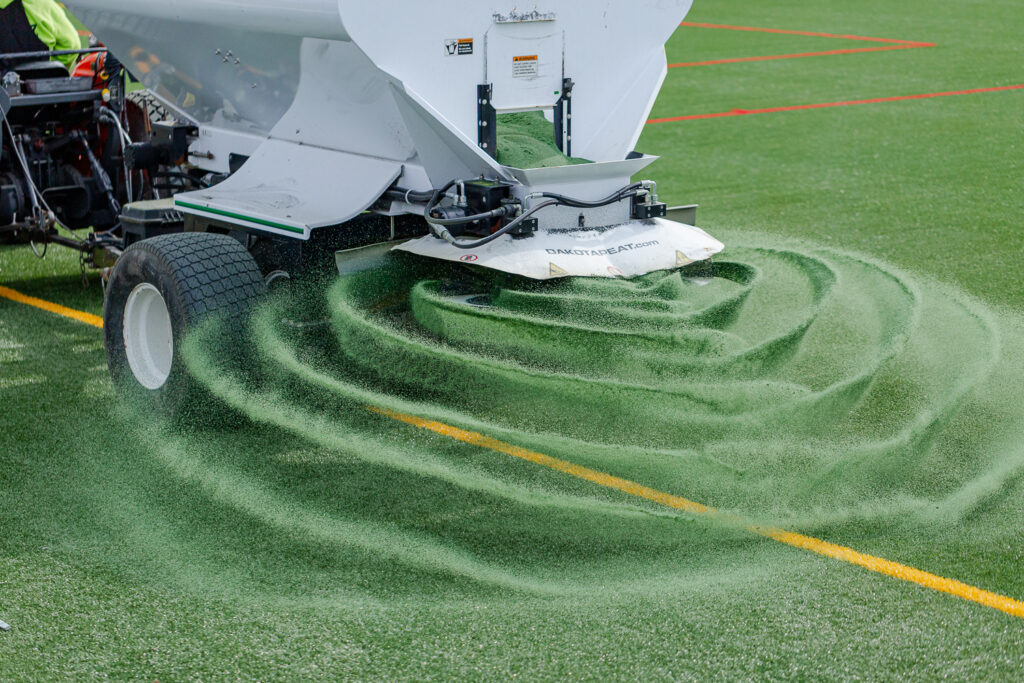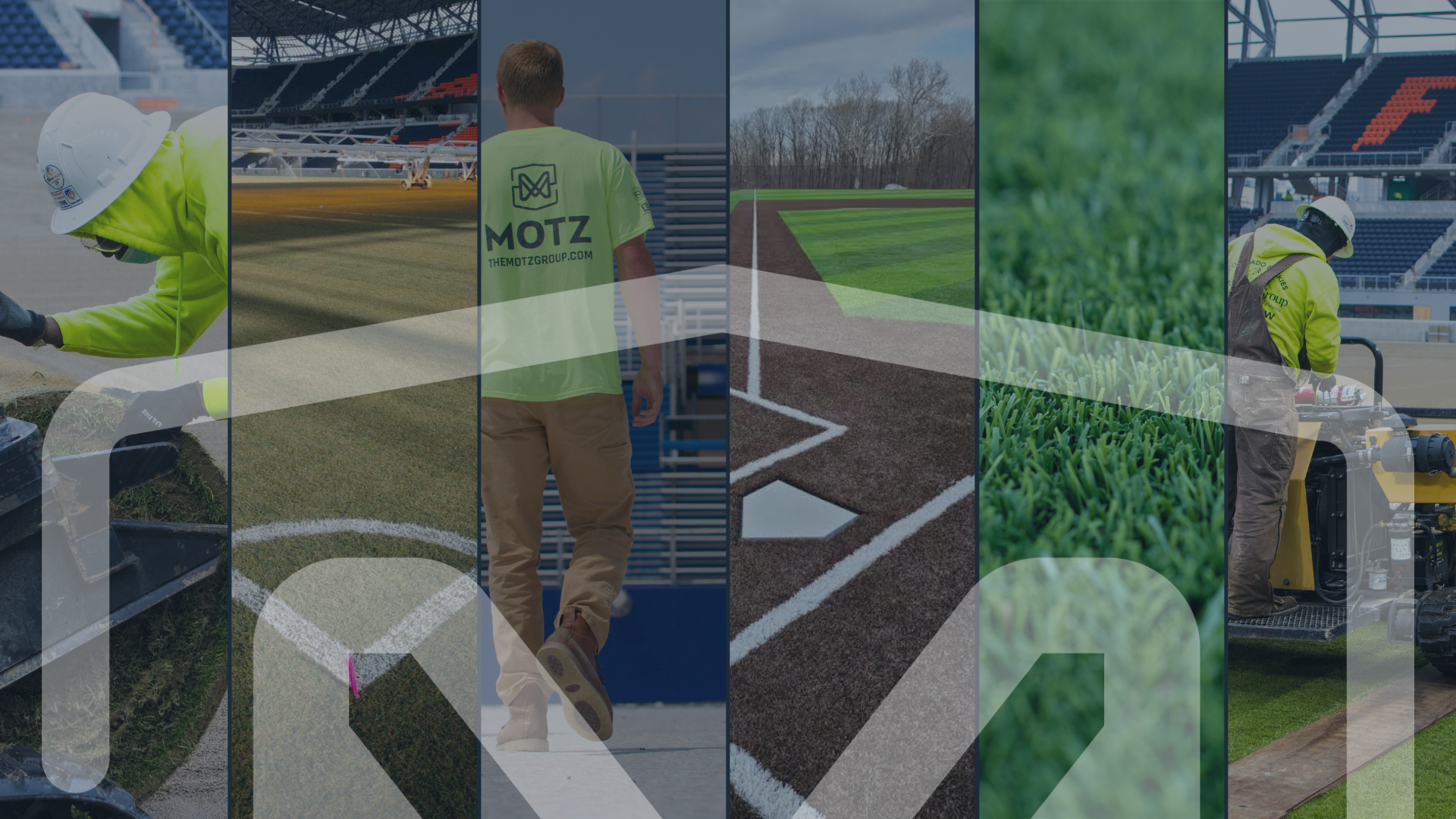
Sports Field Blog
Subscribe To Email Updates
Subscribe to our weekly newsletter and we’ll send updates straight to your inbox
Synthetic Turf Systems Explained
If you’re just beginning to explore the possibilities of an artificial turf field for your school’s athletic facilities, you’ve probably come across a whole slew of new terms and words that may have you scratching your head. And while the vocabulary related to synthetic turf fields may puzzle you at first, it doesn’t have to be overwhelming. Once you understand a few key definitions and how artificial turf fields are installed, maintained, and enjoyed, you’ll feel empowered to make educated decisions.
Allow us to explain the basics. This glossary answers questions like: “what on earth is infill, anyway?” and provides definitions for frequently-used turf industry terms like “pile,” “silica,” and “crumb rubber.” We’ll help you get ahead of the learning curve and become a educated, active participant in building a synthetic turf sports field perfect for your school’s athletic facilities!
System Components
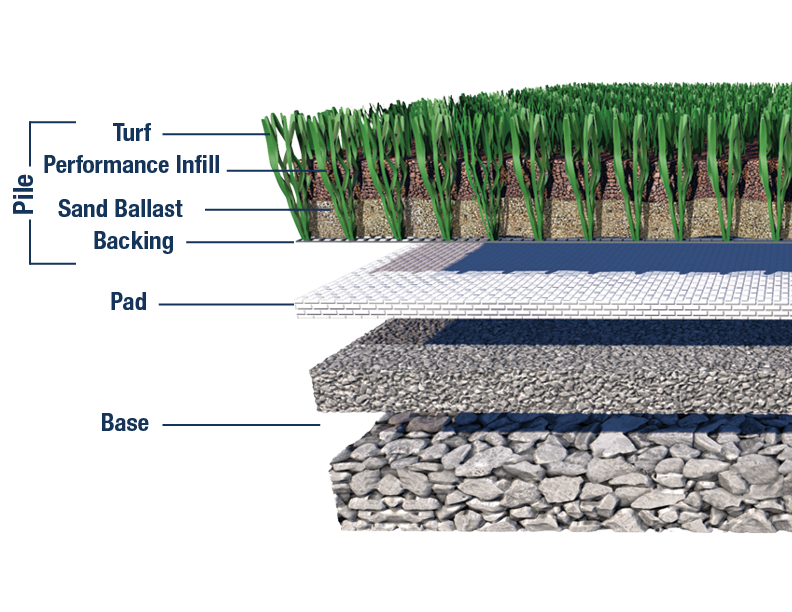
System Components Defined
Turf Fiber
Turf fiber comes in 3 different types:
- Slit-Film: Flat turf blades formed by slitting a thin sheet of plastic.
- Monofilament Fiber: Dimensional turf blades that stand upright.
- Dual Fiber: Slit-film and monofilament turf blades blended together.
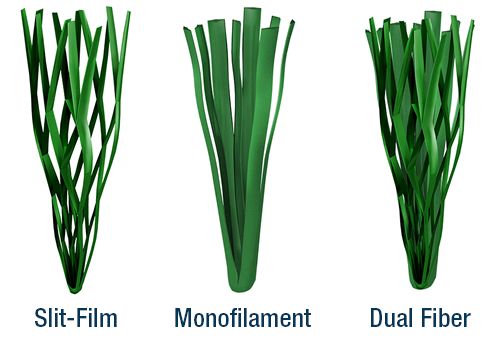
Learn more about different types of synthetic turf by watching this short video on artificial turf types.
Thatch
A shorter, squiggly fiber built into the turf that helps to add fiber and infill stability to the turf system. Thatch is not included in all turf systems.

Turf Backing
The sheet of woven plastic that holds the blades in place. In most systems, the backing has perforated holes and is the main method of vertical drainage on the field.
Pile
The length of fiber from the backing to the tips. It varies in height depending on the application.
Free Pile
The height of the fiber above the infill.
Turf Infill
Infill is the dense, fine particle material located within the synthetic turf. Supporting the turf blades, it acts as the ballast, footing, and athlete shock absorption.
Infill Layer
Sand is often added to lighter weight, performance infills to achieve proper ballast. (Make sure the performance infill is deep enough to cover the common cleat length your players will be using. If the performance layer is not deep enough, your player’s cleats might be interacting with sand meaning you will not receive all of the performance benefits of the top layer of infill.)
Crumb Rubber
This is a composite material of shredded rubber, sourced from used tires. Crumb rubber is the most widely used throughout the United States and typically the least expensive infill option.
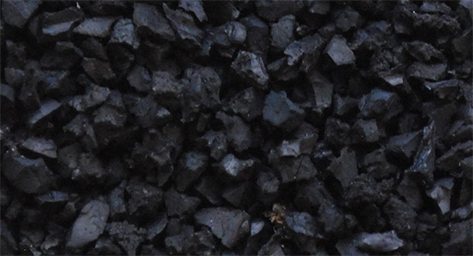
Did you know that Motz offers turf infill solutions that are safe, allergen-free, antimicrobial, and made from natural ingredients?
Progressive Infills (Also known as Alternative Infills)
Infills that are not made from recycled car tires. These infills focus on enhancing the performance of the field and the safety of the players as well as acting as a ballast to hold the turf in place to prevent wrinkles. Envirofill and Safeshell are progressive performance infills.
Envirofill
Coated round sand infused with Microban antimicrobial protection. Envirofill is durable, easy to install, clean, low maintenance, and reusable.
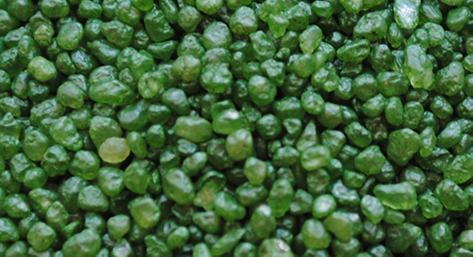
Safeshell
An organic performance infill that is 100% natural. It is a proprietary blend of Black and English walnut shells sourced and manufactured in the United States. Safeshell is a cooler infill that is low maintenance, durable, natural, and allergen-free.
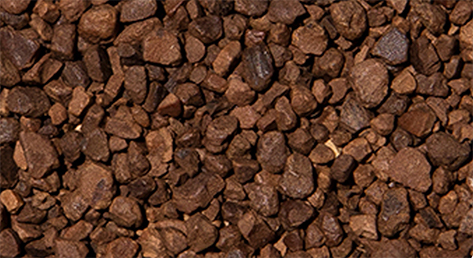
Infill Migration
When the infill within the synthetic turf system moves out of the system over time. It is usually subtle, incremental movement and can be caused by the infill shifting when being played on, weather conditions, or leaving the field with players.
Infill Flyout
When activity on the field causes infill “to fly out of the turf.” This can become an issue because the infill sticks to clothes, gets in shoes, and moves from its original placement in the field causing uneven infill depth, thus, leading to infill migration as defined above.

Top off
Throughout the life of a field, infill will migrate slightly no matter how dense the product is. There are sections of the field that wear faster and may need more infill applied to them from time to time. The act of adding more infill into the turf after it has been installed is called topping off. Progressive infills, such as Envirofill and Safeshell are usually a denser infill meaning they migrate less which leads to less maintenance/top off compared to traditional infills.
Shock Pad
A shock pad is the layer of foam padding installed over the layer of gravel and under the layer of turf in an artificial turf field. It’s often a required safety component of synthetic turf sports fields because its cushiony-support provides protection regardless of infill depth and also reduces concussions. Shock pads help you to get more life out of your field. It comes in varying thicknesses and is available in different types of foam. Not all shock pads are made equal; arm yourself with knowledge about this critical component of a synthetic turf system.
Base
The base of a synthetic turf field is a solid foundation that provides stability for the rest of the system. It is made of gravel (which typically consists of 2 layers: coarse gravel and fine gravel). Some areas of the country use materials like crushed limestone while others use decomposed granite.
Understanding How Synthetic Turf Sports Fields Work
We hope these definitions will aid you in your research and planning. If you still have questions about certain terms or how artificial turf fields work, the USGreentech team is always happy to help. Don’t hesitate to get in touch.
For information on the performance tests available for synthetic turf sports systems and what the tests mean, read this blog.
To learn more about synthetic turf terminology in general, reference the Synthetic Turf Council’s Glossary. It is all-encompassing of any synthetic turf term you may need to know.
Similar Blogs

